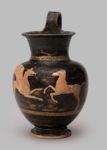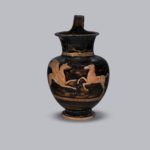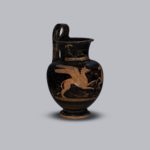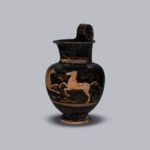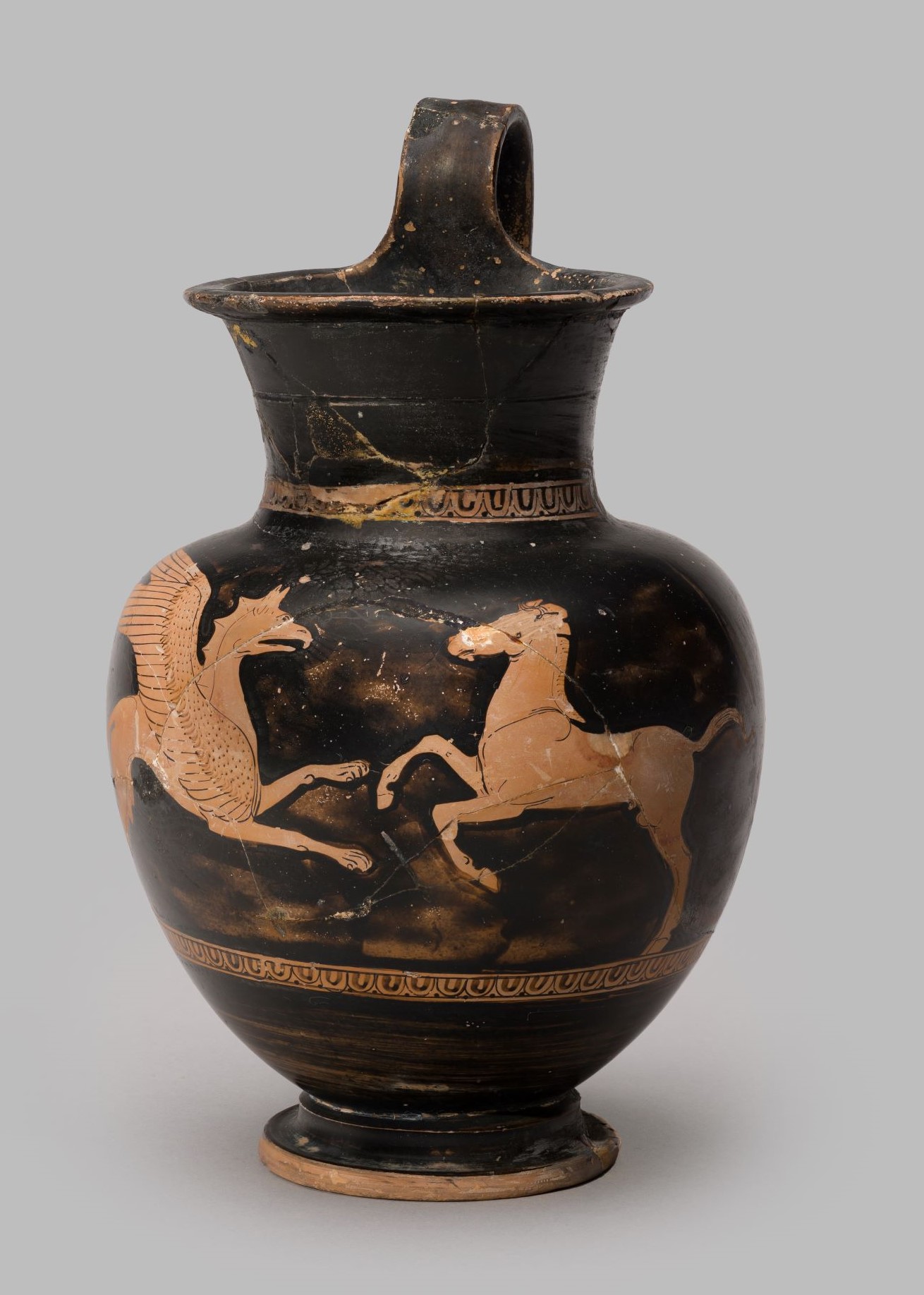
Oinochoe [Gr23]
Athenian Red-Figure, 430-420 BC
Painted terracotta (h. 18.3 cm, d. 13.3 cm), mended and restored
A horse and griffin confronted, both raising their front legs off the ground.
Many painted vases were made for use at the symposium, a drinking party that might include musicians, dancers, courtesans, and late-night parades. This vase is no exception – oinochoai were wine jugs (from οινος (wine), and χεω (to pour)).
The subject of this vase is very unusual. On Athenian vases of the 6th and 5th centuries, animals usually appear only as decorative motifs, or as a ‘prop’ rather than the ‘protagonist’ of a scene (e.g. horses in battle scenes). This is one of a small number of Athenian vases of the Classical period where animals take centre stage. The specific motif, a horse encountering a griffin, is apparently unique to this vase.
Griffins were a hybrid creature which possessed the body, tail and back legs of a lion, and the head and wings of an eagle. The Greeks associated them with the East and they appear regularly in Greek art from about 700 BC onwards. Isidore of Seville (c. 560-636 AD) in his Etymologies (XII.2.17) writes that griffins are hostile to horses. This vase may be evidence that he drew on a much older belief.
Literature: J. Falconer and T. Mannack, Corpus Vasorum Antiquorum: Great Britain, Fascicule 19: Winchester College (Oxford, 2002), p. 8, plate 7.6-8; Winchester College Memorial Buildings: Department of Classical Art (Winchester, 1909), p. 22 (no. 69)
Provenance: From Athens, at Winchester by 1909
Location: Treasury, Gallery 3
